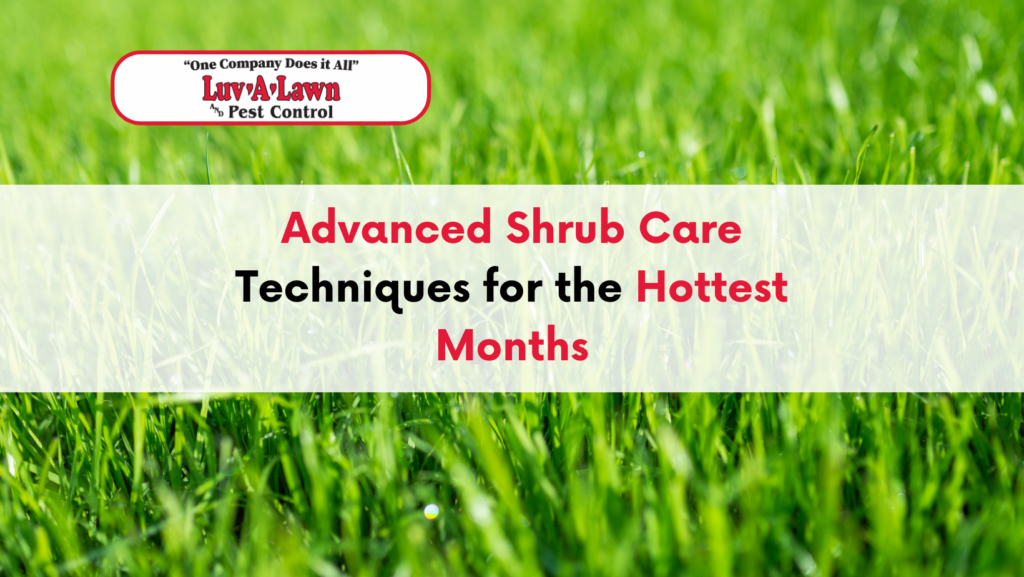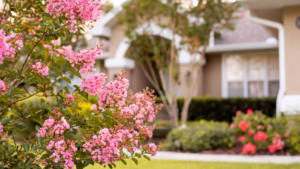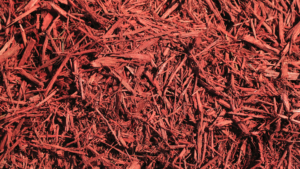
Advanced Shrub Care Techniques for the Hottest Months
Caring for your shrubs can be a challenge when temperatures soar during the summer. Extreme heat can stress your plants, making them more susceptible to damage and disease. Understanding how to help your shrubs thrive even in the hottest months is crucial.
Keeping your shrubs healthy in extreme heat involves several key practices. Proper watering, mulching, and fertilizing can make a significant difference in your shrub’s ability to withstand high temperatures. It’s also important to recognize signs of heat stress early and take steps to mitigate damage.
So, let’s explore advanced shrub care techniques designed specifically for the hottest months of the year. With the right knowledge and tools, you can keep your shrubs healthy and lush, creating a beautiful and resilient landscape. Implementing these tips can help ensure your shrubs not only survive but thrive in the summer heat.

Understanding Your Shrubs’ Needs in Extreme Heat
Shrubs have different needs when the temperature gets very hot. In extreme heat, shrubs need extra care to stay healthy. Some basic needs include more water, shade, and the right type of soil.
Shrubs lose water faster during hot days, making them more likely to dry out. Checking the soil moisture often helps. Ensuring there is enough water around the roots is important for keeping shrubs hydrated.
Heat also stresses shrubs, making them weaker and more prone to diseases. Providing some shade and ensuring the soil is rich in nutrients can help them stay strong throughout the hot months.
Watering Techniques During Summer
Watering shrubs properly in the summer is crucial. Here are some tips to make sure your shrubs get what they need:
- Water Early in the Morning: Morning is the best time to water shrubs. The cool temperature helps reduce water evaporation. This means more water will get to the roots where it’s needed most.
- Soak the Roots: Focus on watering the base of the shrubs. Deep soaking ensures that water reaches the roots, promoting strong root growth. Avoid watering the leaves, as this can cause fungus growth.
- Check Soil Moisture: Use a moisture meter or simply stick your finger into the soil to check if it’s damp. If the soil feels dry several inches down, it’s time to water.
Mulching for Moisture Retention
Mulching helps keep the soil around your shrubs moist. It also helps regulate soil temperature. Here’s how to mulch effectively:
1. Choose the Right Mulch: Organic mulches like wood chips, straw, or shredded leaves are best. They break down over time, adding nutrients to the soil.
2. Apply the Mulch Properly: Spread a 2-4 inch layer of mulch around the base of your shrubs. Make sure to keep the mulch a few inches away from the shrub stems to prevent rot.
3. Reapply as Needed: Mulch can break down and blow away. Check the mulch layer regularly and add more if needed to maintain the correct depth.
Best Fertilization Practices for Hot Weather
Fertilizing shrubs during the summer can boost their health, but it must be done right. Use these tips for fertilizing in hot weather:
- Use Slow-Release Fertilizer: Slow-release fertilizers provide a steady supply of nutrients over time. This helps prevent nutrient burn, which can happen with fast-release fertilizers in hot weather.
- Fertilize in the Early Morning or Late Evening: Applying fertilizer when temperatures are cooler minimizes stress on the plants.
- Follow the Instructions: Always follow the instructions on the fertilizer package. Over-fertilizing can damage shrubs and degrade soil quality.
- Water After Fertilizing: Watering after applying fertilizer helps move the nutrients into the soil and down to the roots where they’re needed.
Understanding the specific needs of your shrubs and using proper care techniques can help ensure that they stay healthy even in the hottest months. Taking these steps will help your shrubs flourish all summer long.
Pruning Tips to Promote Healthy Growth
Pruning is essential for keeping your shrubs healthy, even during hot months. Here are some pruning tips to help your shrubs thrive:
- Prune Just the Right Amount: It’s important to prune enough to remove dead or damaged branches, but not so much that the shrub becomes stressed. Aim to remove no more than 10-15% of the shrub at a time.
- Use Sharp Tools: Make sure your pruners and shears are sharp. Clean cuts heal faster and are less likely to become infected.
- Prune at the Right Time: Early morning or late evening is best for pruning in the summer. This reduces the chance of the shrub losing too much moisture.
- Focus on Dead or Diseased Branches First: Removing these parts helps prevent the spread of disease and allows the shrub to direct energy to healthy growth.
Regular and careful pruning helps shrubs grow stronger and more resilient, making them better equipped to handle the extreme heat.
Identifying and Preventing Heat Stress in Shrubs
Heat stress can greatly affect shrubs during the summer. Knowing how to spot and prevent it is key. Here are some signs of heat stress and what you can do:
Signs of Heat Stress:
- Wilted or drooping leaves
- Scorched or brown leaf edges
- Premature leaf drop
- Stunted growth
Prevention Tips:

- Provide Adequate Water: Ensure your shrubs get enough water, especially during heat waves. Deep watering helps keep roots hydrated.
- Use Mulch: A layer of mulch helps retain soil moisture and regulate soil temperature.
- Create Shade: Use shade cloth or plant taller plants nearby to provide some relief from direct sun.
By monitoring your shrubs closely and acting quickly, you can mitigate the impacts of heat stress and keep your plants healthy.
Choosing Heat-Resistant Shrub Varieties
Selecting the right shrub varieties can make a big difference in handling summer heat. Some shrubs are naturally more heat-tolerant than others. Here are a few good choices:
- Crape Myrtles: These shrubs are known for their vibrant flowers and can handle high temperatures well.
- Oleanders: Oleanders are tough and can withstand both heat and drought.
- Lavender: Lavender adds beauty and fragrance to your garden and thrives in hot conditions.
- Yucca: This hardy shrub is perfect for sunny spots and needs very little water.
Choosing heat-resistant shrubs requires less effort to maintain them during peak summer months. These varieties are better equipped to handle the stress of extreme heat.
Pest Management in High Temperatures
Heat can make shrubs more vulnerable to pests. Managing pests effectively during summer is essential for healthy shrubs. Here’s how to do it:
- Monitor Regularly: Check your shrubs at least once a week for signs of pests. Look under leaves and along stems.
- Use Natural Predators: Ladybugs, lacewings, and spiders can help control pest populations. Encourage these beneficial insects in your garden.
- Apply Insecticidal Soap: For a non-toxic solution, use insecticidal soap to target pests like aphids and spider mites. Follow the instructions carefully.
- Keep the Area Clean: Remove fallen leaves and debris from around shrubs, as these can harbor pests.
By staying vigilant and using safer pest control methods, you can keep your shrubs free from harmful insects and ensure they remain strong throughout the summer. Proper pest management helps in maintaining the overall health of your shrubs, making them more resilient to heat and other stresses.
Soil Health and Its Importance in Summer
Healthy soil is key to keeping shrubs strong during hot weather. Soil quality influences water retention, nutrients, and the general health of your plants. In summer, soil can become dry and compacted, making it tough for shrubs to absorb water and nutrients. To keep soil in good shape, start by adding organic matter like compost or well-rotted manure. This improves the soil’s structure and helps it hold water longer.
Testing your soil’s pH level is also important. Shrubs need slightly acidic to neutral soil (pH 6.0-7.0) to thrive. A simple soil test kit can tell you if you need to adjust the pH with amendments like lime or sulfur. Finally, avoid using heavy machinery that compacts the soil, as this makes it more difficult for shrubs to get the water and nutrients they need.
Shade Solutions to Protect Your Shrubs
Providing shade is an effective way to shield shrubs from the intense summer sun. Too much sunlight can scorch leaves and stress your plants. One simple solution is using shade cloths. These are easy to install and can be adjusted to different heights to provide just the right amount of shade.
Planting strategically is another way to give your shrubs a break from the sun. Consider planting tall, sun-loving trees or perennials nearby to offer natural shade. You can also use garden umbrellas or create temporary structures with lightweight materials to block out the worst of the sun’s rays during peak hours.
Common Mistakes to Avoid During Summer Shrub Care
It’s easy to make mistakes when caring for shrubs in summer. Here are common pitfalls and how to avoid them:
1. Overwatering: Too much water can be as harmful as too little. Water early in the morning and check the soil moisture before watering again.
2. Improper Pruning: Cutting too much can stress shrubs. Only remove dead or damaged branches and avoid heavy pruning in the heat.
3. Ignoring Mulch: Skipping mulch can lead to quick soil drying and overheating roots. Always mulch around shrubs to retain moisture.
4. Skipping Soil Tests: Not testing soil means you might miss out on key nutrients your shrubs need. Check soil pH and nutrient levels regularly.
By steering clear of these mistakes, you’ll help your shrubs remain healthy all summer.
Advanced Shrub Care Tools and Products
Using the right tools and products can make shrub care much easier. Here are some handy items:
1. Drip Irrigation Systems: These provide water directly to the roots efficiently, saving water and keeping foliage dry.
2. Moisture Meters: These gadgets help monitor soil moisture, ensuring you don’t overwater or underwater your shrubs.
3. Soil Amendments: Products like compost and soil conditioners can improve soil structure and nutrient content.
4. Shade Cloths: Adjustable cloths can help protect shrubs from intense sunlight, reducing heat stress.
5. Selective Fertilizers: Use slow-release fertilizers designed for summer feeding to nourish your shrubs without burning them.
Investing in these tools and products can greatly enhance your shrubs’ health and resilience during the summer months.
Thrive in the Heat: Optimal Shrub Care for Summer
Taking care of shrubs in the summer can be challenging, but with the right strategies, it’s doable. Focus on maintaining soil health, providing adequate shade, and avoiding common mistakes to ensure your shrubs thrive. Using advanced tools and products can further support your care efforts.
Remember, caring for shrubs isn’t just about keeping them alive; it’s about helping them flourish. Healthy shrubs add beauty and value to your yard.
If you need expert advice or professional care for your shrubs in Florida, contact LuvaLawn today. We offer expert guidance and top-notch services to keep your landscape looking its best all year round. Let us help you create the lush, healthy garden of your dreams.
